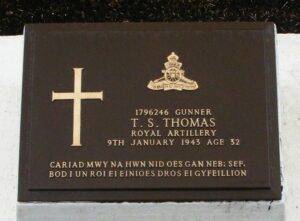Trelech is a village in the parish of Tre-lech a’r Betws, which sits some ten miles north-west of Carmarthen and six and a half miles south of Newcastle Emlyn, on the B4299 road. I presently only have a photograph of the war memorial at Penybont Baptist Chapelyard, and presume that there would be other war memorials in the area, at Trelech Parish Church, or any other local chapel in the area. If anyone has any photographs of other war memorials here, I would be most grateful, as I have created this page by taking the names listed on the 1922 published Carmarthen County War Memorial Roll.
World War One, 1914-1918
Brinley Owen Davies, Lieutenant, Royal Welsh Fusiliers. Brinley was the son of Thomas Owen Davies, chemist, of Abernant. He was an Assistant Master at Trelech, prior to gaining a commission into the Royal Welsh Fusiliers, and was posted to the 16th Battalion, Royal Welsh Fusiliers, which was attached to 113 Brigade, 38th (Welsh) Division. Brinley was commissioned from the Welsh Regiment into the Royal Welsh Fusiliers in November 1917. The 38th Division was then posted to the sector around Armentieres over the winter of 1917-1918, and in April 1918 was sent to positions at Aveluy Wood, north of Albert. Brinley was killed during a patrol on 22 April 1918. He was 19 years old, and is commemorated on the Pozières Memorial, France.
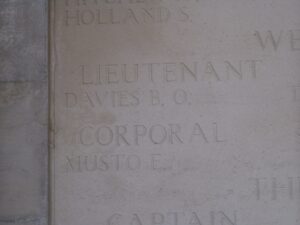
David Davies, Private, 202484, Welsh Regiment. David was the son of John and Anna Davies, of Bryneglur, Mydrim. He was employed by D. Davies, at Llain, Penybont prior to enlisting at Carmarthen into the Welsh Regiment. David was posted to the 18th Battalion (2nd Glamorgan), Welsh Regiment, which was attached to 119 Brigade, 40th (Bantam) Division. The Division moved to France during the first week of June 1916, and moved to the front near Loos. Late in 1916 they moved south to the Somme, and fought at the Battle of the Ancre, and remained in the area over the winter. In March 1917 the Germans withdrew to their shortened line, called the Hindenburg Line, and the 40th Division were one of the Divisions that followed the withdrawal. Later in the year they took part in the Battle of Cambrai, playing an important role in the attack on Bourlon Wood. They remained in the area over the coming months, but were caught here by the German Spring Offensive of 21 March 1918, and fought there at the Battle of St Quentin and retreating back westwards fought at the First Battle of Bapaume. David was killed in action during the retreat, on 24 March 1918. He was 20 years old, and is commemorated on the Arras Memorial, France. David is also commemorated on the Penybont Chapel War Memorial, Trelech.
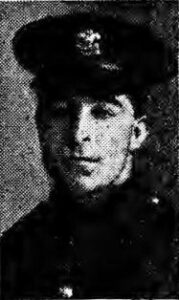
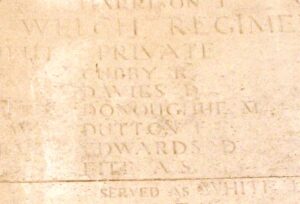
Reginald Charles Wilfred Evans, Private, 68854, Royal Welsh Fusiliers. Reginald was born in 1986, the son of Trevor and Elizabeth Evans, of Trelech. He enlisted at Carmarthen into the Pembroke Yeomanry. He later transferred into the 2nd Battalion Royal Welsh Fusiliers, probably late in 1917, and during February 1918 the battalion was posted to115 Brigade, 38th (Welsh) Division. The Division moved to the Somme from Armentieres during April 1918, and took the line near Aveluy, north of Albert. After holding the line here over the coming months, on 21 August 1918 launched an attack across the River Ancre, and began driving the Germans back towards the Hindenburg Line. The Division then took part in the drive towards Le Cateau, towards the Forest of Mormal, and Reginald must have become wounded during fighting at Englefontaine. He died of wounds on 3 December 1918, aged 23, and is buried at Étaples Military Cemetery, France.
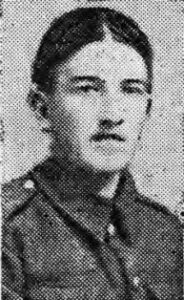
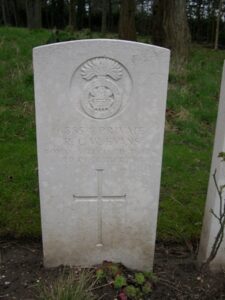
David Harries, Private, 200460, Welsh Regiment. David was the son of Benjamin and Esther Harries, and attended Penybont Chapel, Trelech. He married Jane Davies prior to enlisting at Carmarthen into the 1/4th Battalion, Welsh Regiment, which was the local Territorial Battalion, attached to 159 Brigade, 53rd (Welsh) Division. The Division landed at Cape Helles, Gallipoli, on 9 August 1915, and was immediately thrown into action, spending the next few days in isolated pockets, fighting against a Turkish counter-attack during the Battle of Sari Bair, and then at the Attack on Scimitar Hill. The Division remained here throughout the coming months, and suffered severe losses in manpower strength during the great November 1915 blizzard on Gallipoli, when its total strength was reduced to less than that of a full-strength Brigade. On 11 December 1915 the Division was evacuated to Mudros, and by 23 December 1915 were moved to Egypt. They remained on the Suez Canal Defences for the next twelve months. David was then attached to the 5th Company, Imperial Camel Corps, and took part in operations against the Sultan of Darfur. It was during such an operation that David was wounded, and he died on 15 January 1917. He was 22 years old, and is buried at Kantara War Memorial Cemetery, Egypt. David is also commemorated on the Penybont Chapel War Memorial, Trelech.
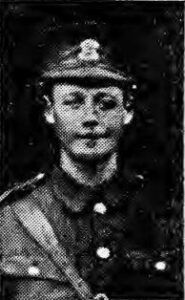
Daniel Jones, Private, 267113, Welsh Regiment. Daniel was born in Trelech, the son of George and Elizabeth Jones. He resided with his brother, John Jones, at Waterloo House, Trefach, Llanfyrnach prior to the war. Daniel enlisted at Carmarthen into the 1/6th Battalion, Welsh Regiment, which had been in France almost since the start of the war, and had become the Pioneer Battalion to the 1st Division. The Division fought at Loos in September 1915, and on the Somme in 1916. During 1917 it took part in the Battle of Arras, and also fought at Third Ypres, and was still in Flanders when the Germans launched their Lys offensive in April 1918. Daniel was killed in action on 8 May 1918 during the German Offensive. He was 37 years old, and is buried at Sailly-Labourse Communal Cemetery Extension, France.
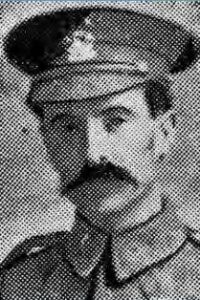
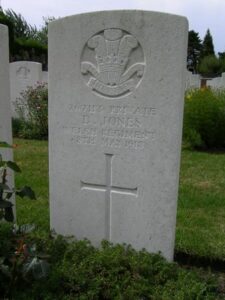
Idris Jones, Private, 65208, Welsh Regiment. Idris was the son of David and Sarah Jones, of Gwalia House, Trelech. He worked as a shop assistant at Aberdare prior to the war and enlisted there into the army on 18 April 1917. On 30 March 1918 Idris landed in France, and was posted to the 18th Battalion, Welsh Regiment, which was attached to 119 Brigade, 40th (Bantam) Division. Idris joined the battalion when it was in positions near Ploegsteert, Belgium, and was killed within weeks, when the battalion was hit by the German Lys offensive on 13 April 1918. Idris was 19 years old and is remembered on the Ploegsteert Memorial, Belgium.
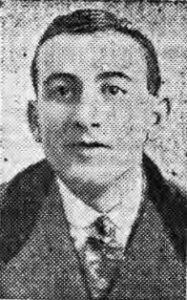
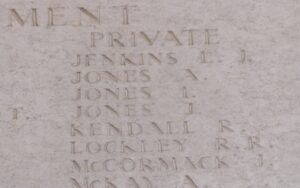
John David Jones, Private, 63459, South Wales Borderers. John was the son of Thomas Jones, of Blaendyflin, Cwmfelin Mynach. He served with the 3rd Battalion, South Wales Borderers, which was a Home Service Battalion and was initially stationed at Pembroke Dock at the outbreak of war, being used to train troops to send to the regular battalions of the regiment. The battalion moved to Edinburgh in November 1914 and in June 1915 moved to Liverpool, where it remained as part of the Mersey Garrison for the duration of the war. Jones probably joined the battalion in 1918 as he has a late service number. He died at Seaforth Military Hospital, Liverpool on 13 October 1918, aged 22 and is buried in Gelliwen (Ainon) Baptist Chapelyard.
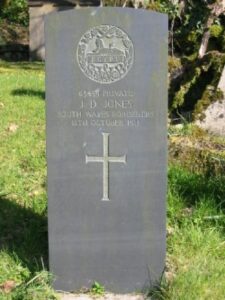
William John Jones, Gunner, 214419, Royal Field Artillery. William was born at Llwyncrwn, Trelech, the son of David and Anne Jones. The family later resided at Gelly Mydrim. William enlisted at Preston into the Royal Artillery, and was posted to France with B Battery, 250th Brigade, Royal Field Artillery, which was attached to the 50th (Northumbrian) Division. The division moved to France during April 1915, seeing its first action during the Second Battle of Ypres, and had fought on the Somme the following year. During 1917 it fought at Arras and at Third Ypres. The division was in the southern Somme sector when the Germans launched their spring offensive on 21 March 1918, and saw heavy fighting before being transferred to the Lys sector. Unfortunately the Germans launched another offensive on the Lys on 9 April 1918, and the division again saw heavy fighting before being transferred to the Aisne to rebuild. Again, the division was caught up in the Germans third, and last, great offensive on the Aisne. William was killed during the Battle of the Aisne, on 27 May 1918. He was 22 years old, and is buried at La Ville-Aux-Bois British Cemetery, France.
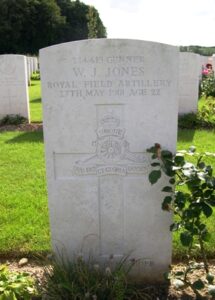
Thomas Morris, Private, 30442, East Lancashire Regiment. Thomas was the son of Mathias and Esther Morris, of Bryndwyran, Gellywen. He enlisted at Woolwich into the Royal Army Veterinary Corps, and later transferred into the 8th Battalion, East Lancashire Regiment, which was attached to 112 Brigade, 37th Division. In July 1915 the Division landed at Boulogne, and remained on the Western Front for the duration of the war. Thomas was killed in action near Ypres on 26 January 1918, aged 25 and is buried at Nine Elms British Cemetery, Belgium.
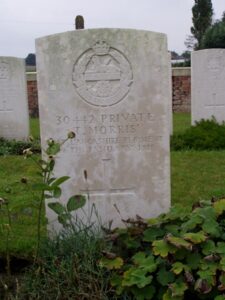
William John Phillips, Private, 43501, King’s Liverpool Regiment. William was the son of Phillip and Bridget Phillips, of Blaenwaun, Trelech. He enlisted at Carmarthen into the Welsh Regiment, but later transferred into the 24th Battalion, King’s Liverpool Regiment, which was a Home Service Battalion. William died of sickness in hospital at Nottingham on 14 June 1916, aged only 19. He was brought home for burial at Trelech (Rock) Congregational Chapelyard.
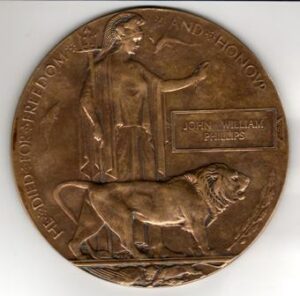
Benjamin Simon Rees, Private, 201535, Welsh Regiment. Benjamin was born on 17 February 1890, the son of Samuel and Margaret Rees, of Tyriet, Gellywen. He enlisted at Carmarthen in April 1916 into the 1/4th Battalion, Welsh Regiment, which was attached to 159 Brigade, 53rd (Welsh) Division. The Division had landed in Gallipoli in August 1915, and remained there until December that year, when they were evacuated to Egypt, where Benjamin joined the battalion. During March 1917 the division took part in the advance into Palestine. Benjamin was killed in action there, during the Third Battle of Gaza, on 4 November 1917, aged 27. He is buried in Beersheba War Cemetery, Israel. His brother David also fell.
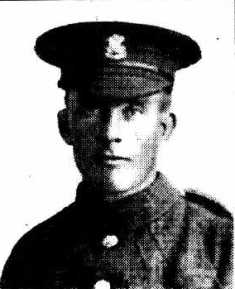
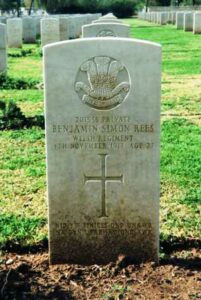
David John Rees, Private, 320243, Welsh Regiment. David was born on 4 December 1891, the son of Samuel and Margaret Rees, of Tyriet, Gellywen. He enlisted at Carmarthen in August 1914 into the Pembroke Yeomanry. The Pembroke Yeomanry was sent to the Middle East in March 1916, and in February 1917 merged with the Glamorgan Yeomanry to form the 24th Battalion, Welsh Regiment, which became attached to 231 Brigade, 74th (Yeomanry) Division. The Division took part in the advance into Palestine during April 1917. David was killed by a bomb dropped from an enemy aircraft on 21 April 1917, aged 25. He is buried in Gaza War Cemetery, Israel. His brother Benjamin also fell.
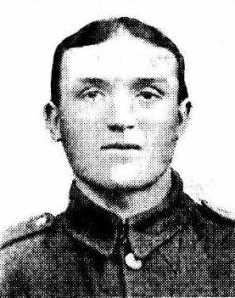
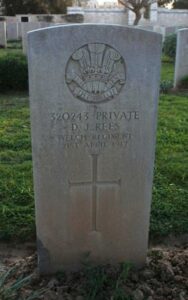
William Oliver Rees, Private, 40262, Welsh Regiment. William was the son of William and Mary Rees, of Trelech. He had lived at Carmarthen for several years prior to the war, working at the Cloth Hall, Carmarthen. He served with the Welsh Regiment in France and Italy, but is not commemorated by the CWGC, so nothing further is presently known of him, except that he died at Carmarthen in the summer of 1919, aged 25.
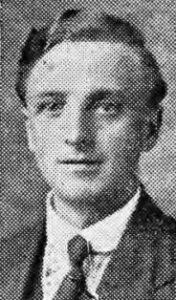
Edmond Thyrkel Trafford, Lieutenant, Norfolk Regiment. Edmund was born in Natal, South Africa, the third son of William Thyrkel Trafford, of Plas Pant Howell, Trelech, and of Kilmore, Rosetta, Natal. He enlisted in South Africa, and served as Serjeant in Eustins Horse. Edmund returned to England at the outbreak of war, along with his brother Geoffrey, and was commissioned into the Norfolk Regiment in October 1915. Edmund was then posted as Lieutenant into their 1st (Garrison) Battalion, which was stationed in India. Very little else is known of him, but he died in Hospital at Karachi on 10 May 1916, aged 23. Edmund was buried at Karachi Cemetery, but due to the impossibility of maintaining graves in India, is commemorated on the Delhi Memorial (India Gate), India.
Geoffrey Thomas Trafford, Captain, 1st Life Guards. Geoffrey was the youngest son of William Thyrkel Trafford of Plas Pant Hoel, Trelech, and of Kilmore, Rosetta, Natal. He returned to England with his brother Edmund at the outbreak of war, and was gazetted into the 1st Life Guards, and landed in France on 4 January 1915. The 1st Life Guards were attached to 7 Cavalry Brigade, 3rd Cavalry Division, and had landed at Zeebrugge on 7 October 1914. The Division then moved to Ypres after the fall of Zeebrugge, and took part in the First Battle of Ypres, which is where Geoffrey joined his new unit. The cavalry brigade suffered heavy casualties at Ypres, but this was to be its last full scale action until late in 1918, as the Western Front settled into a stagnant stage of trench warfare, where Cavalry would prove to be of no worthwhile use. In the Battle of the Somme in July 1916, the British made use of tanks for the first time, when they were used in the capture of the village of Flers-Courcelette. At some time after this, Geoffrey transferred to the Tank Corps, and attended their 9th Battalion. It is not known if Geoffrey served with the tank Corps during their first great success, at the Battle of Cambrai, but in the summer of 1918 he was stationed with the 9th Battalion in the Arras sector, when he was killed in action on 23 July 1918. Geoffrey was 22 years old, and is buried at Roye New British Cemetery, France.
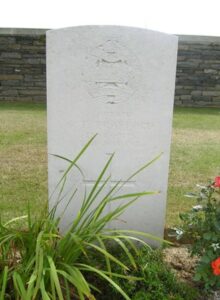
Gwilym Williams, Second Lieutenant, Royal Welsh Fusiliers. Gwilym was the son of William and Esther Williams, of Nantyrafr, Meidrim. He was educated at Aberystwyth University, and was well known as a prominent Welsh Bard prior to the war. Gwilym was commissioned at the outbreak of war into the 17th Battalion, Royal Welsh Fusiliers. The Battalion was raised at Llandudno on 2 February 1915 in 128 Brigade, 43rd Division. On 29 April 1915, the formation became 113 Brigade, 38th (Welsh) Division, and moved from North Wales to Morn Hill Camp, Winchester, where the 17th RWF moved to 115 Brigade, 38th Division. The Division arrived in France in December 1915, and was posted near Armentieres, where the men were familiarised with trench warfare over the coming months, while holding a relatively peaceful sector of the Western Front. In the middle of May 1916, the 17th RWF moved from comfortable billets at Robermetz to take up positions in the front line at Riez Bailleul. Gwilym was wounded by a German rifle grenade on 20 May, and was evacuated to the Military Hospital at Merville for treatment. He died of his wounds on 21 May 1916. He was 26 years old, and was buried with full military honours at Merville Communal Cemetery the following day. Gwilym is also commemorated on the Penybont Chapel War Memorial, Trelech.
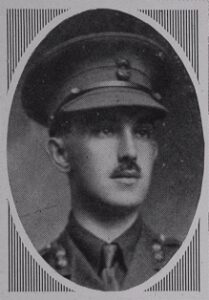
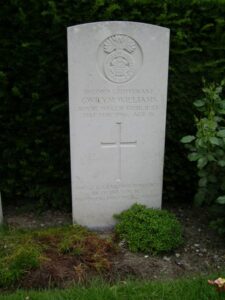
World War Two, 1939-1945
Edwin Jones, Fusilier, 4200480, Royal Welch Fusiliers. Edwin was the son of James and Esther Jones, of Trelech, and the husband of Rachel Phyllis Jones, of Trelech. He served in the 7th Battalion, Royal Welch Fusiliers, who had landed in Normandy after D-Day as part of the 53rd (Welsh) Division. At just after mid-day on 11 August 1944 the CO of the 7th RWF received orders for a Battalion attack on Fresney-le-Vieux and he moved the battalion forwards to its assembly position at North of Les Moutiers-en-Cinglis. The village was believed to be in British hands, but as the fusiliers advanced they came under heavy fire before contacting the enemy and a fierce fight ensued. Edwin was 29 years old when he was killed in action that day. He is buried in Brouay War Cemetery, France.
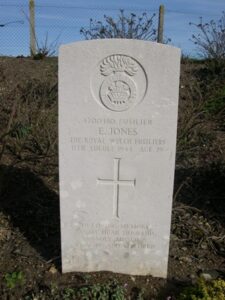
Tudor Samuel Thomas, Gunner, 1796246, Royal Artillery. Tudor was born near St. Clears on 1 March 1910, the son of Samuel and Mary Thomas. He was raised in Aberdare following the early death of his father, as his mother parents had moved there to work, but returned to Carmarthenshire, and lived with his wife Maria at Felinfach, Talog. Tudor enlisted into the Royal Artillery following the outbreak of war and embarked for the Far East with 48 Light Anti-Aircraft Regiment, Royal Artillery from the Clyde on 6 December 1941, bound for Batavia, Java. The Japanese invaded Java on 28 February 1942 and following heavy fighting the Allied Commanders signed the surrender document on 12 March. Tudor was taken prisoner by the Japanese during this brief campaign in the Dutch East Indies and was later transported to Japan, where the prisoners were used as forced labour, as a result of lack of Japanese manpower. He died in a Prisoner of War Camp in Omine, Nagasaki, on 9 January 1943, aged 32. His remains were originally interred near his camp but in 1946 were re-interred in Yokohama War Cemetery.
